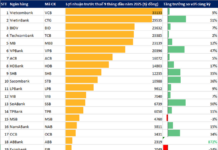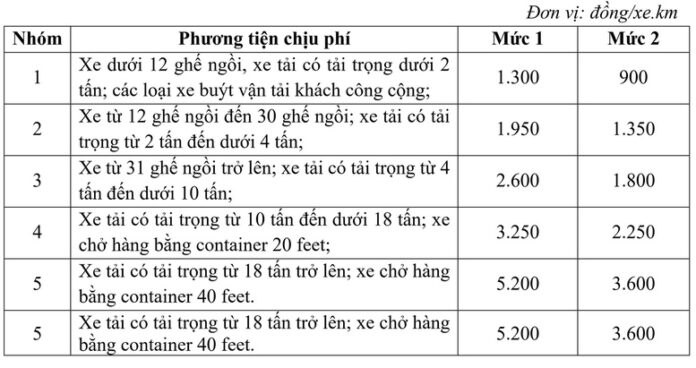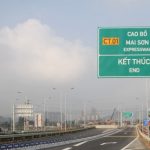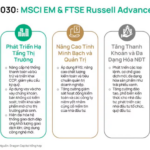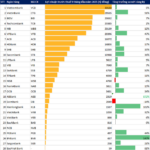
Draft Decree on Toll Collection for Expressways
The Ministry of Transport has submitted to the Government a draft decree on toll collection for the use of expressways. The draft decree consists of 4 chapters and 13 articles regulating the conditions and timing for implementing toll collection for expressways, as well as the regime for collection, payment, exemption, management, and use of expressway tolls.
The issuance of this decree aims to complete the legal framework and provide clear regulations on the types and objects of toll collection, and the implementation plan to ensure feasibility, transparency, and openness.
Toll Collection Only Applies to Roads that Meet Expressway Standards
Regarding the conditions and timing for implementation, the draft decree states that toll collection can only be carried out after the expressway has been designed and constructed according to the standards and technical regulations for expressways and other relevant technical regulations. The expressway construction project must be completed and put into operation in accordance with the Law on Construction.
RELATED NEWS



For expressway projects that were approved for investment before the Law on Roads took effect, if they do not fully meet the requirements when put into operation, toll collection will be implemented after the completion of the construction and installation of toll stations, software systems, and equipment; service facilities at rest stops; and technical infrastructure and technology equipment for traffic management.
The agency in charge of managing the expressway must develop an Asset Operation Scheme and submit it to the competent authority for approval. The timing and specific routes for toll collection are determined in this scheme. The management and operation of expressways will utilize the existing human resources in the transport sector, thus not requiring additional personnel to implement the decree.
Regarding the toll rates, the Ministry of Transport proposes the following rates for expressways invested by the State:
Toll rate for expressways that meet all the conditions for toll collection (Rate 1): equivalent to 70% of the benefits obtained from using the expressway (approximately 1,300 VND/vehicle.km).
Toll rate for expressway projects that were approved for investment before the Law on Roads took effect and do not fully meet the requirements when put into operation (Rate 2): equivalent to 50% of the benefits obtained from using the expressway (approximately 900 VND/vehicle.km).
“With the proposed rates, it is expected that the toll collection from 10 operating expressways will reach 3,210 billion VND/year, of which 2,850 billion VND/year will be contributed to the state budget,” said the Ministry of Transport.

Buses with 30 or more seats gain the most benefit from using expressways
No Double Toll Collection
Explaining this proposal, the Ministry of Transport stated that the toll rates are set to basically ensure the compensation for management, organization, toll collection, and expressway maintenance costs. The rates also take into account the State’s socio-economic development policies, ensuring transparency and openness, and are calculated based on the benefits to the users.
10 expressways expected to collect tolls: Hanoi – Thai Nguyen, Ho Chi Minh City – Trung Luong, Mai Son – QL45, QL45 – Nghi Son, Nghi Son – Dien Chau, Cam Lo – La Son, La Son – Hoa Lien, Vinh Hao – Phan Thiet, Phan Thiet – Dau Giay, My Thuan – Can Tho.
The ministry also affirmed that there would be “no double toll collection” as the expressways bring greater benefits to road users compared to the parallel national highways. Road users have the choice to travel on the parallel national highways (without paying additional expressway tolls) or pay to use the expressway and enjoy better services and benefits. The toll collection for expressways invested, owned, managed, and operated by the State does not cause double toll collection. Expressway users share the benefits with the State, and the toll rates must be lower than the benefits gained by expressway users.
In the submission to the Government, the Ministry of Transport also provided an analysis of the expressways invested by the State before 2020, which are currently in operation or preparing for operation. The results show that compared to traveling on parallel national highways, vehicles traveling on expressways will benefit an average of 4,824 VND/vehicle/km. Of this, 25% comes from the savings in vehicle operating costs, and 75% from the savings in time for goods and passengers.
Buses with 30 or more seats gain the most benefit from using expressways, with an average of more than 14,000 VND/vehicle/km, while trucks with a capacity of less than 2 tons gain the least benefit, with an average of 1,174 VND/km. The average benefit per PCU is 2,616 VND/PCU/km.
The toll rates are calculated based on the analysis of the benefits of vehicle owners when traveling on these expressways. At the same time, the sharing of benefits between expressway users and the State is considered, with the toll rates set at 50-70% of the benefits obtained from using the expressway.
Highway Toll Tolls From Nha Trang To Cam Lam, Cost Up To 310,000 VND/Round Trip
Effective April 26th, the Nha Trang – Cam Lam Expressway in Khanh Hoa Province will begin collecting tolls ranging from VND82,000 to VND311,000 per trip, depending on the vehicle type. The tolls will be used to recoup the investment costs of the Public-Private Partnership (PPP) project, which opened to traffic in May 2023.
Expanding the Cao Bo – Mai Son Expressway to Six Lanes
The Ministry of Transport has just approved the investment project to expand the North-South Expressway Eastern Route section from Cao Bo to Mai Son. This 15.2-km-long highway, initially designed as a four-lane expressway, will now be expanded to accommodate six lanes. The project is expected to be completed by 2027.
The Ultimate Guide to Highway Tolls: Unveiling the Proposal by the Ministry of Transport
The Ministry of Transport is drafting a decree on toll collection for expressways. This draft proposes regulations for toll collection from vehicles traveling on expressways owned by the people and directly managed, operated, and owned by the state.







